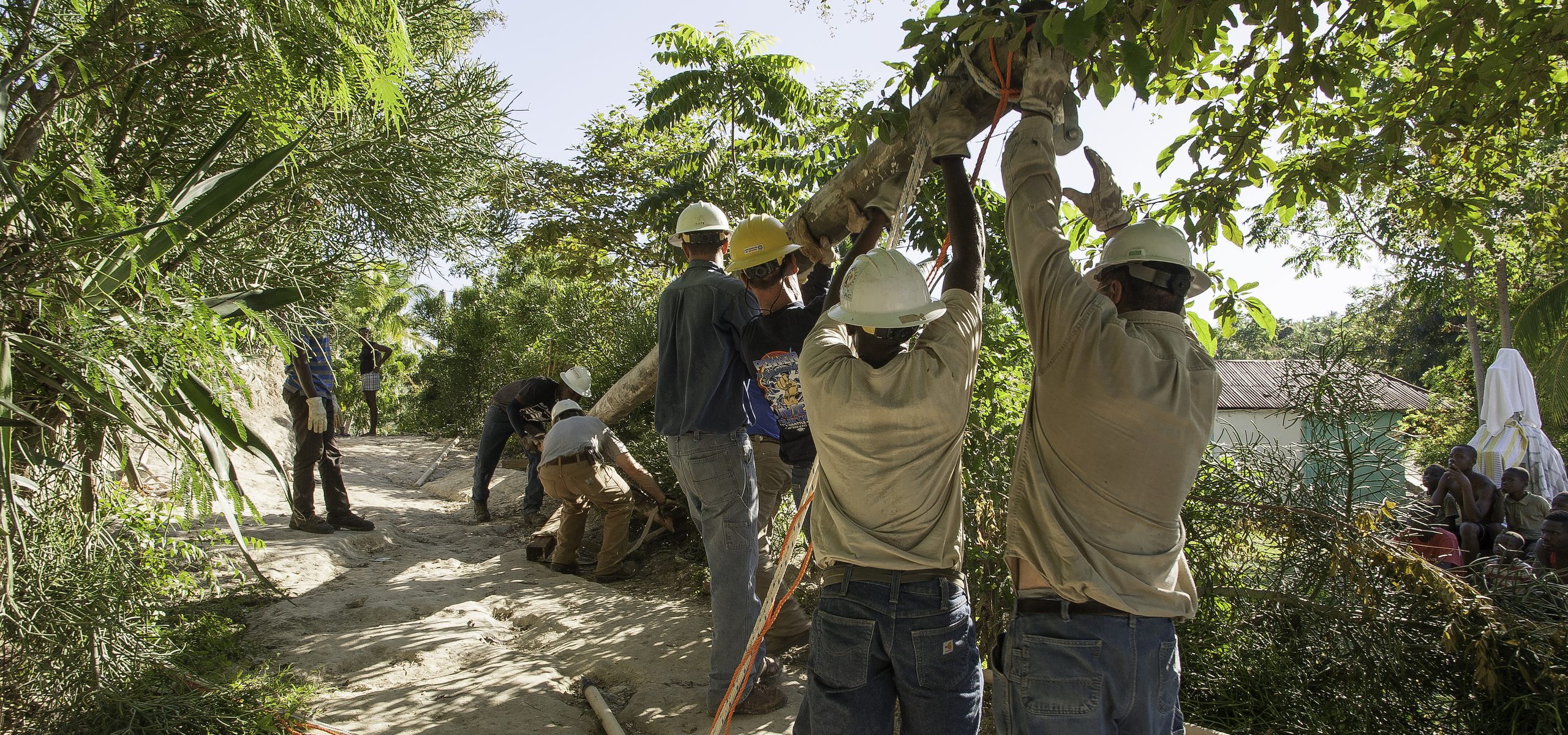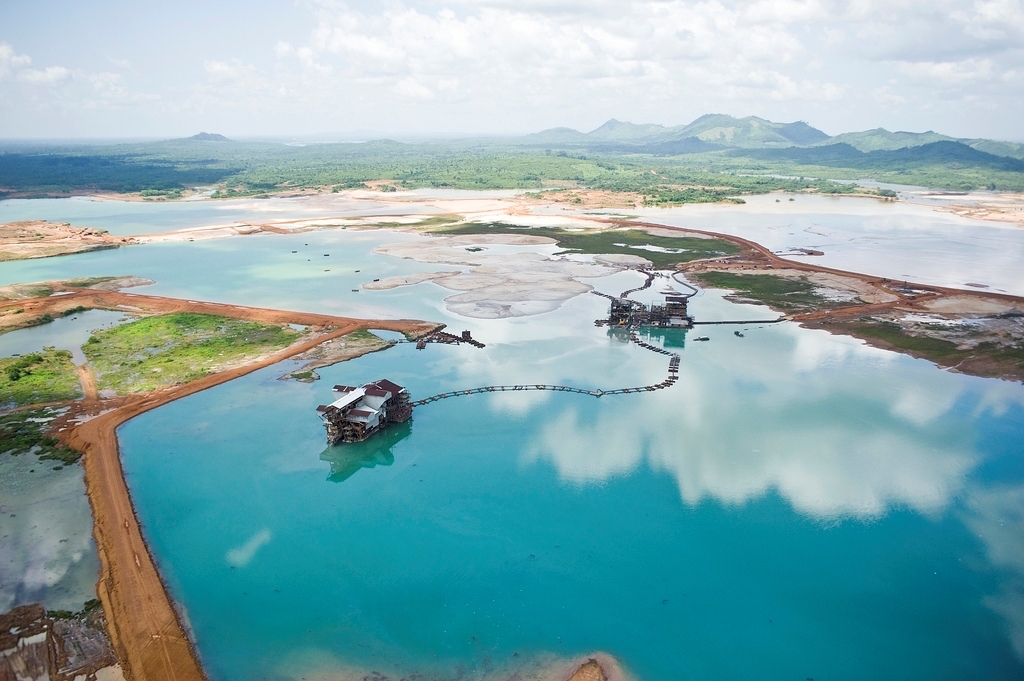Assessments
Including environmental concerns and considerations in risk assessments

Including environmental concerns and considerations in risk assessments
Aerial view of the Kingfisher development area near Lake Albert, Uganda Finding substantial reserves of oil and natural gas can offer significant opportunities for the social, economic and political development of any country. However, without adequate environmental management, oil and gas operations can have lasting social and environmental…
The United Nations Environment Programme (UNEP) together with the United Nations Development Programme (UNDP), theUnited Nations Department of Political and Peacebuilding Affairs (DPPA) have conducted a study on Gender, Climate and Security. The report looks at Climate Change as the ultimate "threat multiplier"'; as it threats peace and security-building in…
This document details the objectives of the Working Group on Remote Environmental Analysis for Humanitarian Action, which has been set up as part of the Joint Initiative project.
The UN Environment Guidance note on Integrated Strategic Environmental Assessments in Post-Crisis Countries provides information on how to integrate disaster risk reduction and climate change adaptation in sustainable reconstruction and development planning. It provides practical guidance on how to manage the process of assembling data.
This study published by Evidence on Demand reviews a selection of materials on the environment and humanitarian interventions, including disasters and conflict. It considers various actors in the field of environment and humanitarian response, as well as existing knowledge development for managing environmental concerns during humanitarian interventions…
Guidelines to provide an educational response in emergency and reconstruction settings. Chapter 4.4 focuses on environmental education in emergencies.
Guidelines for environmentally sound design and management of schools.
The INEE Minimum Standards Handbook is the only global tool that articulates the minimum level of educational quality and access in emergencies through to recovery. The environment is addressed throughout the publication.
The Sphere Minimum Standards for Healthcare are a practical expression of the right to healthcare in humanitarian contexts. The standards are grounded in the beliefs, principles, duties and rights declared in the Humanitarian Charter, including the right to life with dignity, protection, security, and the right to receive humanitarian assistance…
This training module is concerned with construction materials and procurement. It describes how to use fewer materials, how to use local sources of materials in a sustainable way, and the use of disaster debris and recycled items as building material.
The Index for Risk Management (InfoRM) published by the European Commission and the Interagency Standing Committee (IASC) is a composite indicator that identifies the countries at a high risk of humanitarian crisis that are more likely to require international assistance. Core indicators have been chosen to respond to changes in…
The Inter-Agency Standing Committee (IASC) Emergency Response Preparedness (ERP) approach enables the humanitarian community to proactively prepare for crises requiring a coordinated international response. The ERP approach supports the identification and prioritization of preparedness actions to ensure an effective humanitarian response in the first few weeks of an emergency.
This guidance note provides guidance in analyzing the disaster risk-related consequences of potential projects via their impact on the environment and also the potential threat to projects posed by natural hazard…
This discussion paper by UN Environment addresses the complexity of risk between environment and human societies.
This study, published by Evidence on Demand provides an overview of the key reasons that environmental and climate change issues are relevant in the context of humanitarian action.
The Awareness and Preparedness for Emergencies at Local Level (APELL) Programme aims to reduce industrial risks at local level, raise awareness and build local capacity to respond to emergencies.
The Capacity for Disaster Reduction Initiative (CADRI) is a global partnership composed of 15 UN and non-UN organizations that works towards strengthening countries' capacities to prevent, manage and recover from the impact of disasters.
The Flash Environmental Assessment Tool (FEAT) is a tool which helps identify existing or potential acute environmental impacts that pose risks for humans, human life-support functions and ecosystems, following sudden-onset natural disasters.
Chatham House report on the assessment of energy use by humanitarian organizations and aid operations.
Living under a black sky۪ reveals how the conflict in Iraq has left a toxic trail of destruction which could have severe health consequences for communities and reconstruction efforts.
A mission report covering the aftermath and disaster waste management of the two devastating hurricanes that struck the Caribbean islands in September 2017.
A technical note from a rapid scoping mission assessing the environmental issues in areas retaken from ISIL in Iraq.
Chatham House Report for the Moving Energy Initiative.
This fact sheet presents the Environmental Emergency Risk Index (EERI) created by the UN Environment/OCHA Joint Unit.
These guidelines were developed with the aim of supporting the full cycle of disaster waste management, from risk reduction and contingency planning through to emergency planning response following a disaster or conflict.
This joint mission report formulates a strategy and framework to operationalize the environment as a cross-cutting issue.
The research paper, "Faecal Sludge Management in Africa: Socio-economic aspects, human and environmental health implications", aims to explore how current trends in faecal sludge management are impacting human and environmental health in Africa (both sub-Saharan and Northern Africa).
Cash and voucher Assistance (CVA) has been used widely in humanitarian programs. Like all types of humanitarian operations, CVA can have environmental impacts. This includes but not limited to soil pollutions, an increase in CO2 emission, etc.
Access to reliable energy is a pre-requisite to enable growth and progress for any individual, community or nation. This report, co-authored by Boston Consulting Group, highlights the immediate need to address the widening energy access gap impacting vulnerable populations in Sub-Saharan Africa.
This study, conducted in 2019, focuses on the definition of climate vulnerability with operational and political perspectives and delivers guidelines for assessing climate vulnerability in long-term crises, such as in conflict-affected countries and recurrent disaster-prone areas. The research draws on an extensive academic literature review in the fields of biology,…
This study, conducted in 2020, sheds light on a variety of potentials and pitfalls of remote sensing for disaster risk analyses in fragile contexts. This topic gains importance in light of the need to formulate more systemic and better-integrated approaches to risk-informed development. Evidence-based policy recommendations encourage organizational learning and…
Groupe URD conducted a study on the environmental practices of the international organisation,with funding from the Humanitarian Environment Network in 2019. Despite the environmental and climate emergency, which predominantly affects countries where humanitarian operations take place, these issues are still not taken into account properly in aid organisations practices and…
A research study looking at the impacts of forests on diet. The results indicates that forests could help reduce vitamin A and iron deficiencies and the study establishes the causal relationship between forests and diet, thus strengthening the incentives for integrating forest conservation and management into nutrition interventions.
A technical report on the rapid diagnostic assessment of land and natural resources degradation in Uganda undertaken by the FAO in collaboration with the Ugandan Ministry of Water and Environment (MWE) in 2018.
This report published by the Disasters Emergency Committee (DEC) highlights the results of its environmental impact scoping. The report was prepared as a scoping exercise for DEC members in order to highlight possible areas for further research among the membership. It summarizes the key tools, mechanisms and initiatives aimed at…
UN Environments website on Disasters and Conflict…
UN Convention on Biodiversity comprehensive guidelines for the design and effective implementation of ecosystem-based approaches to climate change adaptation and disaster risk reduction, including opportunities for the humanitarian sector…
Norwegian Refugee Council (NRC) website on climate change and disasters…
Groupe URD is an independent institute which specializes in the analysis of practices and the development of policy for the humanitarian and post-crisis sectors. Their work includes guidance on cross-cutting issues such as aid quality, the environment, disaster risk reduction and more.
A collection of resources and guidance on early warning systems provided by the Caribbean Disaster Emergency Management Agency (CDEMA).
World Wildlife Fund (WWF) Environment and Disaster Management (EDM) program collaborates with humanitarian and development agencies, the United Nations (UN), academic institutions and others to integrate environmental considerations into disaster recovery, reconstruction, and risk reduction programs and policies, and to learn and develop new approaches.
A collection of different resources on WASH and environment…
A collection of environmental sustainability tools by the WASH Alliance…
This guideline will help identify potential adverse environmental impacts of use of cattle, sheep, goats, pigs, poultry, and other livestock and suggest mitigation and monitoring options, as well as “best management practices,†to address them.
Key facts on the links between food security and the environment by FAO.
The Environmental Performance Index (EPI) published by the Yale Center for Environmental Law and Policy ranks 180 countries on 24 performance indicators across ten issue categories covering environmental health and ecosystem vitality.
The IASC Operational Guidance on Coordinated Assessments in Humanitarian Crises (IASC-CA) promotes a shared vision of how to plan and carry out coordinated assessments. Outputs from coordinated assessments support humanitarian decision-making by focusing on how to enhance preparedness and coordinate assessments.
The Fumigation PEA establishes a clear approach to manage health and environmental risks for actors that plan to undertake phosphine fumigation in a warehouse setting.
A Wetlands International report on the situation of wetlands and human migration in the Sahel.
A report by PAX for Peace regarding Syria۪s oil industry, the rise of makeshift oil refining and the issues arising from these practices.
A film about the UNECE Convention on the Transboundary Effects of Industrial Accidents.
Understanding the current and potential future environmental conditions of a region is essential for an efficient and sustainable response
Addressing environment as part of preparedness planning lays the foundation for its integration into humanitarian action.
Communicating risks effectively to populations and communities is essential for people to be able to be better prepared and to reduce the damaging impacts of hazards.
Policies supported by institutional frameworks and legal arrangements make up the disaster risk management framework. In order to systematically integrate environmental concerns in humanitarian action, one must consider the institutional arrangements governing disaster preparedness, response, recovery and emergency funding.
An understanding of evolving risks is fundamental to a timely and effective response. The analysis of disaster risks informs the planning of a response, while monitoring ensures that the process is responsive to changing contexts




